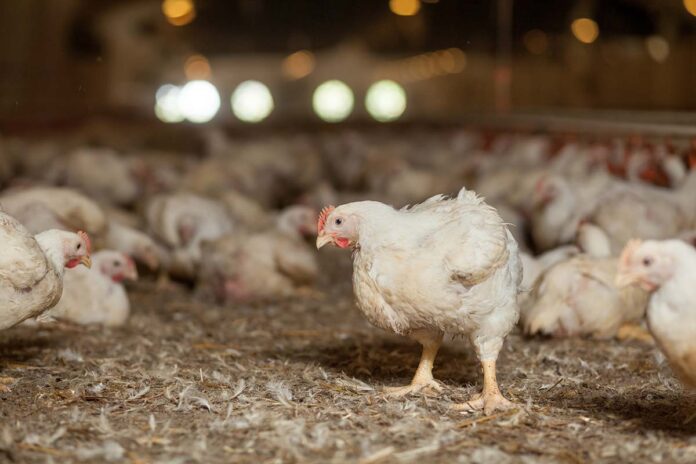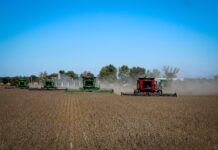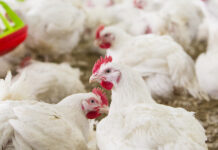
From vitamins to vitagene. In this second part the focus will be on the Vitagene concept, which refers to a group of genes involved in preserving cellular homeostasis during stress conditions.
Vitagene concept development
Since at the molecular level most stresses are associated with overproduction of free radicals and oxidative stress, the development of effective antioxidant solutions to decrease negative consequences of commercially-relevant stresses is an important task for poultry scientists.
One of such approaches is based on possibilities of modulation of vitagenes, a family of genes responsible for animal/poultry adaptation to stress. The term “vitagene” was introduced in 1998 by Rattan who wrote “Our survival and the physical quality of life depends upon an efficient functioning of various maintenance and repair processes. This complex network of the so-called longevity assurance processes is composed of several genes, which may be called vitagenes”. Later the vitagene concept has been further developed in medical sciences by professor Calabrese and colleagues in 2004-2016.
In accordance with Calabrese et al. the term vitagenes refers to a group of genes that are strictly involved in preserving cellular homeostasis during stress conditions and the vitagene family includes heat shock proteins (HSPs), including heme oxygenase-1 (HSP32, HO-1) and HSP70, the thioredoxin system and sirtuins. The list of potential candidates to vitagene family was extended. In particular, SOD, a major inducible enzyme of the first level of antioxidant defense, has been included into the vitagene family. The products of the mentioned genes actively operate in detecting and controlling diverse forms of stress and cell injuries.
The cooperative mechanisms of the vitagene network are reviewed in recently published in the aforementioned comprehensive reviews with a major conclusion indicating an essential regulatory role of the vitagene network in cell and whole organism adaptation to various stresses. Indeed, cellular stress response is mediated via the regulation of pro-survival pathways and vitagene activation with the following synthesis of a range of protective antioxidant molecules is the central event in such an adaptation.
The vitagene concept helped in developing effective strategies to fight oxidative stress in various human diseases, including neurodegenerative disorders, neuroprotection, aging and longevity, dermatology, osteoporosis and Alzheimer pathology, and other free radical-related diseases. Indeed, HSPs, including heme oxygenase-1 (HO-1) and HSP70, are responsible for protein homeostasis in stress conditions of poultry production, while the thioredoxin system is the major player in maintaining redox status of the cell involved in protein and DNA synthesis and repair as well as in regulation of expression of many important genes.
Furthermore, sirtuins regulate the biological functions of various molecules post-translationally by removing acetyl groups from protein substrates ranging from histones to transcription factors and orchestrate cellular stress response by maintenance of genome integrity and protein stability. Finally, SODs belong to the first level of antioxidant defense preventing lipid and protein oxidation at the very early stages. All the aforementioned vitagenes operate in concert, building a reliable system of stress detection and adequate response and are considered to be key elements in stress adaptation.
Vitagene-based concept of fighting stress in poultry production
Recently, the vitagene concept has been successfully transferred from medical sciences to poultry science. The new concept of fighting stresses is based on an idea that supplying birds with various antioxidants via the drinking water could help them to effectively deal with stress conditions.
Indeed, a decreased feed consumption at time of stress is observed and existing feeding systems do not allow to include anything into the feed loaded into the feed storage bins. Therefore, water-soluble additive supplementation via drinking system is shown to be a valuable option. In fact, modern commercial poultry houses are equipped with water medication systems, which can be effectively used for the aforementioned supplementations.
It was proven that inclusion of vitagene-regulating compounds (carnitine, betaine, vitamin E, etc.) as well as some minerals, vitamins, electrolytes and organic acids in water, could be effective in fighting various stresses. This helps at chick placement, when the antioxidant system is crucial for the digestive and immune system development. In particular it was proven that inclusion of an anti-stress composition (PerforMax) into the drinking water at the University trial improved chicken growth and feed conversion ratio. Using the same anti-stress composition in commercial conditions improved FCR during a 39 day broiler growth trial. At the end of the trial, the improvement in FCR due to the anti-stress composition during the first three days post-hatch as well as before and after vaccination was highly significant.
The importance and efficacy of the anti-stress composition for rearing birds and adult egg type parent stock at one of the biggest egg producing farms in Russia (Borovskaya poultry farm, Tumen region) have been recently reviewed. In particular it was shown that usage of the anti-stress composition with drinking water at specific periods of the increased stress can improve breeder’s performance. In particular there was an increase by 2% of the egg peak production and peak plateau lasted about 50 days longer than that in the control birds. It is interesting to note that hen housed egg production in the control group (260.8 eggs) was higher than the target for the line (253.4 eggs) and in the experimental group it was increased by 6 eggs. Furthermore, improved egg production was associated with increased weight of the oviduct in the experimental layers.
It is also important to mention that FCR (feed per 10 eggs) was also improved by usage of the anti-stress composition and was better than the target for the line. Notably, shell strength at age 26, 36 and 56 weeks was improved in the experimental group by 2.8, 5.6 and 5.6%, respectively. The most interesting finding was related to a significant increase of the carotenoid level in the egg yolk of experimental birds. Since carotenoids were not supplied with the anti-stress composition, this increase could be due to improved absorption of nutrients resulting from anti-stress composition usage. This can also explain improved FCR in the experimental birds.
Vitamin A level in the egg yolk from the experimental layers was also increased probably reflecting its transfer from the anti-stress composition. In particular, anti-stress composition usage was associated with improved fertility at 16, 40, 48 and 56 weeks by 2.5; 2.7; 2.8 and 3.7%, respectively. In the same experimental group the hatch of condition chicks improved at 26, 32, 40, 48 and 56 weeks by 3.6; 2.1; 3.4; 4.9 and 4.3%, respectively. In addition, it was shown that the anti-stress composition had an immune-modulating effect in broilers and growing ducklings.
Improvement of the antioxidant system via supplying an anti-oxidant composition via the drinking water could also help dealing with various mycotoxins in feed, including DON, ochratoxin and T- 2 toxin. Furthermore, such a technology could help fight heat stress and immunosuppression. However, further work is required to understand molecular mechanisms of the interactions of vitagenes with various signaling systems and transcription factors in the cell to build an adequate adaptive response to minimize detrimental consequences of commercially-relevant stresses in poultry production.
You can find first part here
References are available on request
From the Proceedings of XXV World’s Poultry Congress
















